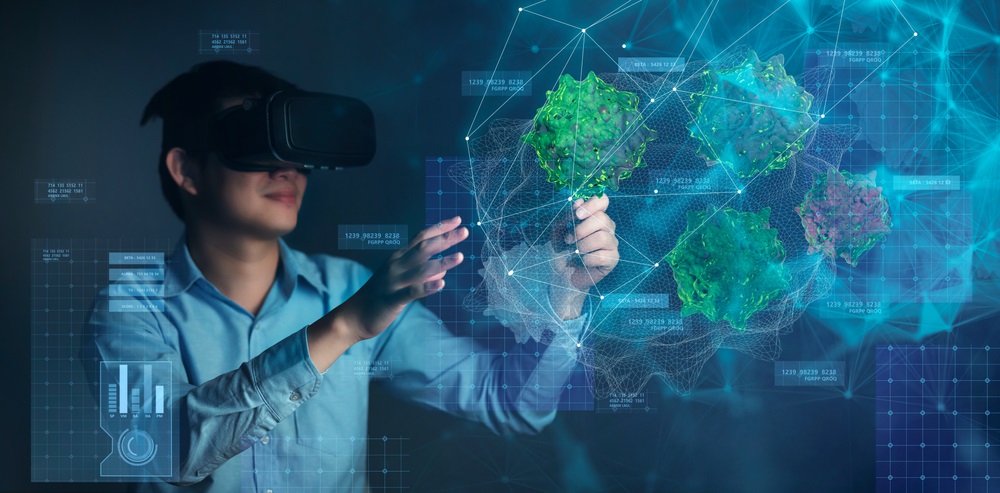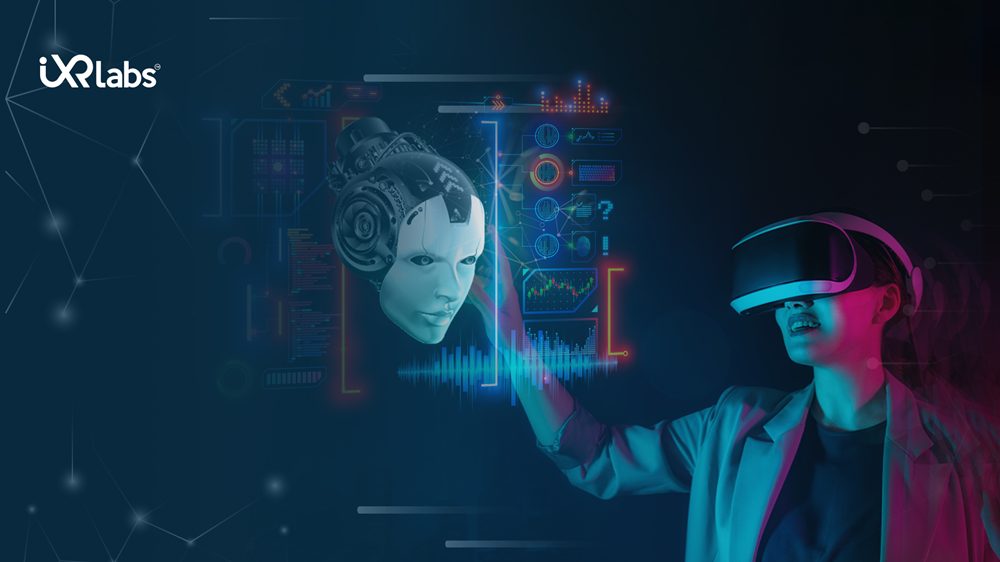Top 5 Innovations in STEM Education You’ll See in 2024

Today’s world is driven by innovations.
From entertainment to education, technological innovations have changed every aspect of our daily lives.
And, in this constantly changing landscape, STEM education stands at the forefront of preparing the next generation of leaders, innovators, and problem solvers to prepare them for the challenges and complexities of the 21st century.
In this blog post, we will delve deep into the top 5 innovations that will impact STEM education in 2024, exploring their potential impact on student engagement, learning outcomes, and the future of STEM education.
1. Rise of Artificial Intelligence in Curriculum Design
In the coming year, Artificial Intelligence is going to play a crucial role in transforming STEM education.
Historically, we used traditional teaching methods that rely on a one-size-fits-all approach. But, Gone are the days of this rigid approach.
Artificial intelligence is ushering in an era of personalized learning experiences tailored to individual students' strengths, weaknesses, and learning styles.
To know about this, simply imagine an AI-driven platform that meticulously analyzes the academic profile of the student, along with recognizing nuances like excelling in mathematics but struggling with the phenomenon of physics.
In response to the analysis, the platform can dynamically recalibrate the curriculum, amplifying physics-related modules while offering supplementary resources and targeted support.
Such an adaptive learning mechanism in simulated labs in stem education ensures that students receive precisely what they need when they need it, optimizing their learning trajectories.
According to a compelling study by EdSurge, schools integrating AI-powered learning platforms have witnessed remarkable outcomes, including, a 40% improvement in student performance and a 25% reduction in dropout rates.
Such statistics underscore the transformative impact of AI in education, validating its efficacy in the development of more engaging, efficient, and effective STEM education.
Moreover, AI's analytical prowess enables the continuous refinement and optimization of STEM curricula.
By synthesizing vast troves of educational data, AI algorithms generate dynamic, real-time learning plans that evolve concerning the progress and needs of the students.
Thus, creating flexible learning environments that accommodate diverse learning styles and paces.
In essence, AI's role in curriculum design heralds a much-needed shift, transcending the limitations of conventional educational frameworks.
By harnessing AI's capabilities, educators can cultivate more inclusive, personalized, and impactful STEM learning experiences, equipping students with the skills, knowledge, and adaptability to thrive in an ever-evolving technological landscape.
How will it benefit the STEM education?
Adaptive Learning: Adjusts in real-time based on individual student performance.
Efficiency: Maximizes learning outcomes by focusing on areas that need improvement.
2. Embracing Virtual Lab Space

Yes, virtual reality has already impacted STEM education because of its plenty of advantages. But, in 2024, the fusion of Virtual Reality (VR) laboratories and the broader concept of virtual lab spaces is what we can see.
The static textbooks and 2D images? This will be a thing of the past.
In the coming year, more and more institutions will understand the power of VR in education. There will be an increase in the adoption of virtual reality in education.
With the help of VR headsets, the learners will be transported into the immersive and interactive world of virtual reality that replicates real-world scientific scenarios.
To understand this, you can imagine a medical student. Reading medical, we can picture him in a biology lab, dissecting a human with a constant fear of making mistakes.
However, things are different in virtual reality. In the VR world, he can go through the intricate pathways of multiple organ systems and learn about their functionality without the fear of committing mistakes.
Now alternately, you can imagine an enthusiastic physicist learning with VR. Here, he is able to manipulate gravitational forces in a simulated cosmos.
Such immersive encounters in the virtual world with the subject matter leave the concept of passive learning.
Thus, VR labs increasing student engagement is made possible by catching the attention of the students.
A pivotal report by Education Technology Insights underscores this transformation.
The higher education institutes that have integrated VR laboratories into their educational approach have witnessed a remarkable 35% surge in student engagement levels.
Furthermore, there was a notable 28% uptick in retention rates when compared to conventional teaching methodologies.
You might ask, what are the major reasons for this?
✔️ Hands-on Experience
If you think the virtual reality labs are the hub of simulations, then you are wrong. It is a lot more than this.
VR is able to replicate real-world scenarios with remarkable fidelity. And, this fidelity allows students to perform practical experimentation, make informed decisions, and derive immediate feedback.
 Get the App from Meta Store: Download Now
Get the App from Meta Store: Download Now
Such tangible experiences cultivate a nuanced understanding of STEM concepts, bridging the gap between theory and its practical application.
✔️ Accessibility
Beyond the boundaries of physical infrastructure, virtual lab spaces have democratized access to quality STEM education.
They serve as an equalizer, where all the geographical constraints and socio-economic barriers blur away.
As a result, students living in remote locales or underserved communities can now access unparalleled resources and experiences, levelling the educational playing field.
Thus, breaking the digital divide.
3. Blockchain Security
In the traditional education world, the education system had to face a lot of challenges concerning the management and verification of credentials, academic records, and transcripts.
Traditionally, all these processes are time-consuming. Not only this, but also they are susceptible to errors, fraud, and security breaches.
Conversely, blockchain technology offers a viable solution to these inherent issues. It provides institutions with a secure, transparent, and immutable platform for recording and verifying academic credentials.
By leveraging cryptographic principles and decentralized consensus algorithms, this innovative technology creates a tamper-proof system that safeguards sensitive data and credentials.
The inherent security mechanism of blockchain mitigates the risks associated with data manipulation, unauthorized access, and fraudulent activities, thereby bolstering the credibility and integrity of academic certifications and records.
At its core, blockchain operates as a decentralized ledger system that replicates and disseminates transactions across a vast network of computers.
This distributed nature ensures transparency, security, and immutability which are the qualities that are increasingly essential in today's digital landscape.
Well, its magnificent significance in STEM education can be illustrated by its exponential market growth.
According to data, the global blockchain technology market surged to an impressive $5.92 billion in 2021.
Forecasts indicate a staggering annual growth rate of 85.9% from 2022 to 2030, highlighting the transformative potential and widespread adoption of this technology across industries, including finance, healthcare, and notably, education.
In the coming year, institutions can harness blockchain technology to streamline administrative processes, facilitate secure data sharing among stakeholders, and even enable innovative models that allow smooth content distribution and intellectual property rights management.
4. Augmented Reality (AR) Interactive Textbooks

Just like other higher education technology trends, augmented reality is also expected to impact STEM education tremendously.
AR technology metamorphoses traditional textbooks into dynamic and interactive learning platforms. On one side where virtual reality transcends students into an immersive virtual world, AR brings virtual information to the real world.
To understand its effectiveness, let’s take an instance of DNA structure. Traditionally, students have to go through a series of processes to examine the microscopic structure of the DNA molecule.
However, with AR technology, the students can explore the intricate structure of a DNA molecule not through abstract diagrams but through an AR-enabled textbook that allows them to manipulate and dissect its components in real-time.
Now think about the rest of the human body structure. With the help of AR technology, students are able to visualize, interact, and comprehend complex STEM concepts with unparalleled depth and clarity.
Thus, creating a genuine appreciation for the intricacies of the natural world and technological advancements.
The burgeoning influence of AR in STEM education is substantiated by a revealing statistic from Forbes.
According to the report, a compelling 70% of educators endorse AR technology as a potent element for enhancing student engagement and comprehension in STEM subjects.
5. Gamification of STEM Courses

In recent years, the advancements in education in the form of the online classroom and technological advancements have paved the way for innovative teaching methodologies.
Among these, gamification stands out as a transformative approach to engage students actively in STEM courses.
By integrating game-design elements such as points, rewards, and leaderboards into educational activities, gamification enhances the learning experience, making it more interactive and enjoyable.
But what is the Science Behind the idea of introducing gamification in STEM education?
Well, research has shown that gamification triggers dopamine release in the brain. This release of dopamine results in creating a sense of pleasure and reward among students.
Thus, the neurological response results in a more enjoyable learning environment that is known to increase the motivation of students to participate actively in lessons and future activities.
Moreover, with the use of points, rewards, and leaderboards in education, educators can motivate students further to strive for excellence, thereby enhancing their engagement and commitment to mastering STEM concepts.
It is noteworthy that gamification not only motivates students but also encourages practical application and problem-solving.
It immerses students in challenges, such as coding exercises with rewards for completing tasks or solving complex problems, educators can possibly facilitate the development of critical thinking and problem-solving skills.
Furthermore, gamified practices in STEM education transform teachers into coaches, guiding students through real-world applications of STEM concepts and fostering a deeper understanding of their relevance and importance.
And, its impact?
Well, the impact of gamification on STEM education is backed by compelling statistics.
A study published in the Journal of Science Education and Technology revealed that implementing gamified learning environments can increase student motivation by up to 80% and improve knowledge retention by 30%.
These statistics underscore the effectiveness of gamification in enhancing student engagement, motivation, and retention of STEM concepts.
Conclusion
To conclude, these five innovations, i.e., Artificial Intelligence Curriculum Design, Virtual Reality laboratories, gamification of STEM courses, Augmented Reality interactive textbooks, and Blockchain security are all set to revolutionize the future of STEM education.
As we step into 2024, these innovations reflect the efforts of higher educational institutions to prepare students for the upcoming challenges and opportunities of the world ahead.





